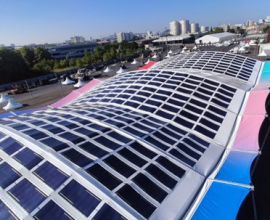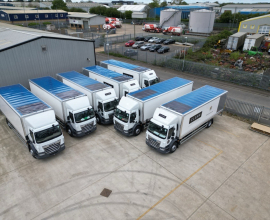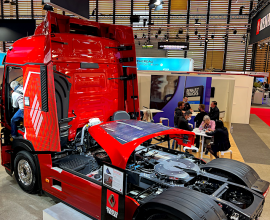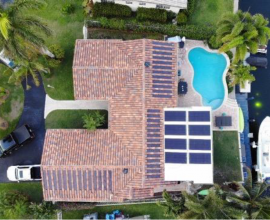From Retrofit Magazine
Rooftop solar has become commonplace on commercial buildings and homes. Although a residential home often has sufficient rooftop area to power the home 100 percent with solar, this is not always true with multi-story commercial
Rooftop solar has become commonplace on commercial buildings and homes. Although a residential home often has sufficient rooftop area to power the home 100 percent with solar, this is not always true with multi-story commercial
Rooftop solar has become commonplace on commercial buildings and homes. Although a residential home often has sufficient rooftop area to power the home 100 percent with solar, this is not always true with multi-story commercial buildings, apartments and condominiums. The properties often do not have the necessary roof space to offset their energy needs with solar. This situation can also apply to low-rise buildings with high electrical usage, such as factories, big-box stores and warehouses.
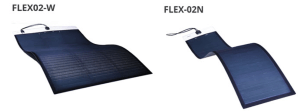
Carports have become a standard feature on many commercial and multifamily properties. Even buildings without carports have parking lots with space for them. Carports provide users the benefit of shading cars and protecting cars and people from rain and snow. Carports keep cars cool, reducing the power required to air condition them when they’re started and reducing sun damage to the car finish. From an environmental standpoint, carports help migrate the heat island effect in which large concrete and asphalt parking lots absorb heat during the day and release the heat at night. This additional heat can drastically change local weather patterns, especially in metropolitan areas.
In recent years, building owners have been installing new carports with solar PV modules. These solar carports have all the benefits of traditional carports with the added advantage of producing clean renewable solar energy while reducing the need to add rooftop solar to buildings.
In many places, existing carports were designed and built with minimal steel support structures and the metal roof and deck panels are already spanning the maximum distance between supports to keep costs down. Most were built to meet the minimum local wind and live-load code requirements. With the cost of solar installations falling, utility energy costs rising and increased interest in improving the environment while reducing a building’s carbon footprint, building owners are interested in retrofitting their existing carports with solar modules. Unfortunately, many of these existing carport structures cannot support the additional 4- to 6-pounds-per-square-foot weight of standard crystalline PV modules and associated racking and rails. The only solution available to the owner is to structurally upgrade the carport or tear it down and replace it with a carport designed for the extra weight of solar. Even if the existing carport structure can support the weight, retrofitting the carport with solar can be technically challenging and expensive.



